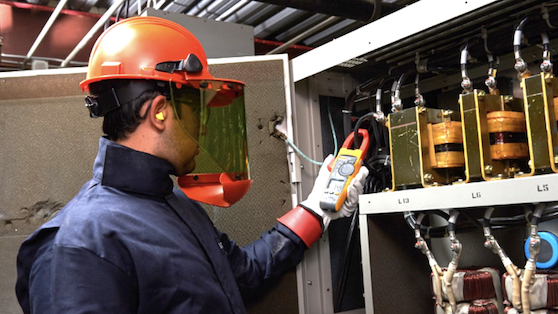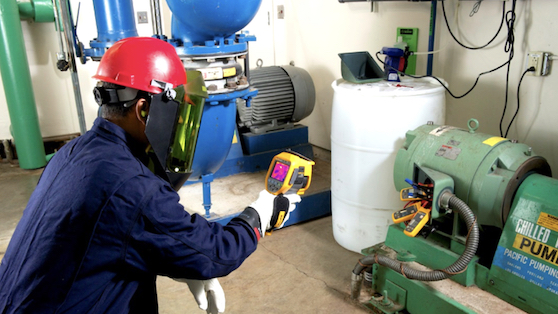
Articles
Features
Articles
Best practices for preventing motor failure: Be proactive, not reactive
October 21, 2020 | By Jason Axelson
 As motors become increasingly complex, keeping them running at peak performance can be difficult. EB October 2020.
As motors become increasingly complex, keeping them running at peak performance can be difficult. EB October 2020. October 26, 2020 – Motor control systems are used in critical manufacturing processes and increasing in complexity and technicality, creating a challenge to keep them at peak performance. Equipment failure is expensive, whether due to costs associated with replacement parts or the loss in production.
Because motor failure can be the result of mechanical or electrical issues, it is important to keep both in mind when troubleshooting. Arming maintenance engineers and technicians with the right knowledge, prioritizing workload and managing preventive maintenance can help avoid motor failures due to normal system operating stresses and reduce overall downtime costs.
Instead of always fixing issues after they arise, look for signs a problem is coming.
There are 4 Best Practices you can adopt to prevent failures in motor drives and rotating components:
1. Capture initial asset condition and specifications
2. Set up a preventive maintenance schedule
3. Plot individual measurements to establish a baseline
4. Conduct a trend analysis
1. Capture initial asset condition and specifications
Capture the critical information for an asset—operating condition, machine specification and performance tolerance ranges—at installation. This way, you will know how the asset is supposed to run. As you conduct regular checks afterward, you will be able to notice when anything is off from the original installation.
By following this process, you can catch potential issues with improper installation before they cause motor failure. All mechanical installations wear, but improper installation wears the asset down sooner. The installation is the foundation for the rest of the asset’s life, after all. Before getting the asset up and running, check for issues such as:
• Soft foot: the mounting feet of a motor are uneven.
• Pipe strain: stresses and forces acting on the rest of the equipment transfer backward into the motor.
• Shaft voltage: exceeding the insulating capacity of the bearing grease causes flashover currents to the outer bearing.
Like any strong foundation, when an asset starts with a solid base, it is likely to last longer.
2. Set up a preventive maintenance schedule
Start by tracking the operating conditions of the motors in your facility, and set up a regular schedule for conducting preventive maintenance on the assets throughout. Add thermal imaging to your schedule to capture the heat output of motors and assets. The thermal images will reveal when an asset is running too hot or too cold (as compared to your established baseline), so you will know it is time to deepen your investigation.
Use the specification and tolerances of the motor that were captured at installation and compare for any anomalies. As you conduct regular checks as part of your preventive maintenance, you’ll know what measurements you’re looking for.
Mechanical issues are likely to show up no matter what, because time eventually wears down most assets. However, the assets can last longer when you follow a regular preventive maintenance schedule; problems are caught and fixed early, saving you from having to replace the entire asset or system.
Some common mechanical issues include:
• Misalignment: the motor drive shaft is not in alignment with the load.
• Shaft imbalance: the centre of a rotating part does not lie on the rotational axis.
• Shaft looseness: excessive clearance between rotating and stationary elements inside a motor.
• Bearing wear: surfaces sliding against each other without enough lubrication to keep them apart.

Use thermal imaging as part of your preventive maintenance program to catch motor issues early. EB October 2020.
Many breakdowns that arise from mechanical issues will begin to show first as vibration. A system of vibration sensors—when used along with a preventive maintenance schedule—can help catch these kinds of problems before they lead to a failure.
3. Plot individual measurements to establish a baseline
Save the measurements and thermal images taken during a preventive maintenance routine, and use them to create a baseline of your assets’ performance. Any change in the trend line of more than, say, 10% to 20% should be investigated to understand the underlying factors. For some assets, you may need to determine whether the percentage change in the trend line should be based on your system’s performance or the asset’s criticality.
Since variable frequency drives (VFDs) take one wave shape and convert it into another, establishing a baseline for running motors will allow you to see when the output changes. Use a True-rms multimeter and a motor drive analyzer to diagnose problems related to VFDs, which often show up as:
• Reflections on drive output PWM signals: impedance mismatch between the source and load.
• Sigma current: stray currents circulating in a system.
• Operational overloads: a motor under excessive load.
True-rms meters can validate the wave shapes and help you decide how to repair the VFD. As with many other asset repairs, it’s more cost-effective to catch and repair issues rather than run an asset to failure. Again, at that point, you’re likely replacing the whole asset or system.
4. Conduct a trend analysis
Once you have the baseline, continue tracking and recording measurements regularly. With this information, you can create an archive as you go, helping to create a trend analysis and make it easier for anyone to identify a change in the condition of any motor.
Power quality-based problems can be caught early on with a proper trend analysis. These larger issues can show up as:
• Transient voltage: sudden release of energy that causes electrical energy surges.
• Voltage and current imbalance: differences between the voltage magnitudes or phase angle.
• Harmonic distortion: unwanted additional sources of high-frequency AC voltage or current supplying energy to the motor windings.
They should be validated with power quality loggers, and may require external intervention to repair the problem.
Identify signs of motor problems early
By arming your maintenance engineers and techs with this knowledge, you can identify signs of motor problems before they become serious. Avoid the expense of replacing assets or downtime by capturing the initial asset condition and specifications, setting up a preventive maintenance schedule, establishing a baseline and using that information to conduct a trend analysis. Following these steps will help you catch issues and make repairs before motor failure.
Jason Axelson is a product application specialist for Fluke where, for more than 15 years, he has been helping customers and partners find solutions for power quality, scope meters and battery testers. He also conducts application training to help diagnose and resolve both technical and product enquiries.
This article—along with other great content—appears in the October 2020 edition of Electrical Business Magazine.
Print this page